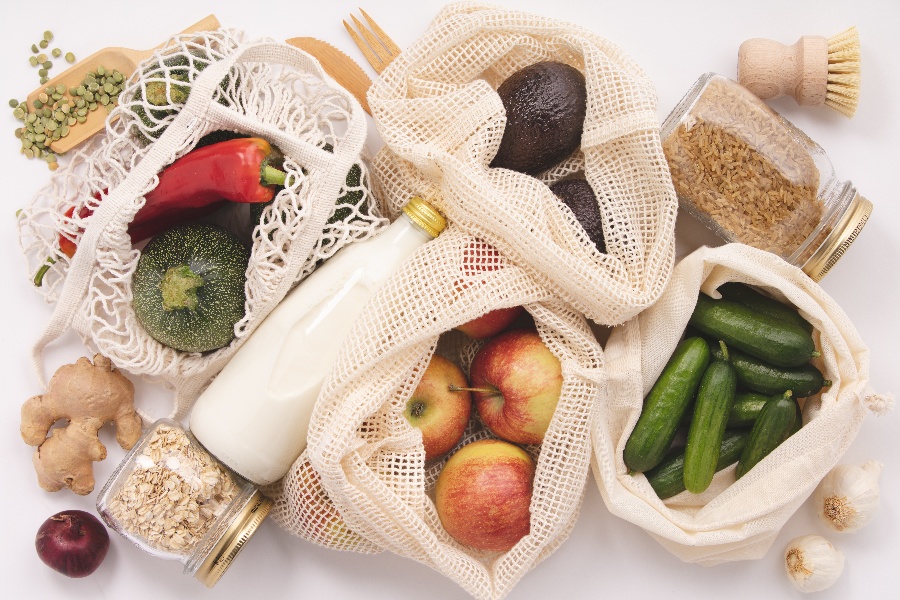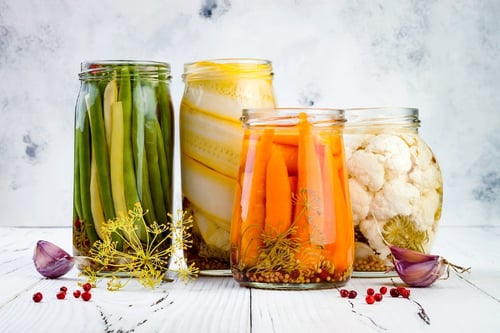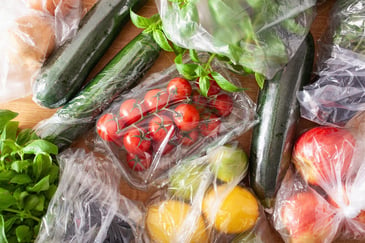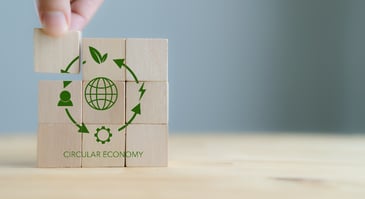5 Ways to Reduce Household Food Waste

Food waste represents one-third of all the food produced globally. In richer countries, that waste is more likely to happen at the retail and consumer level. In fact, a North American or European consumer wastes almost 100 kg of food annually, more than their average weight. But food waste is more than just well—a waste.
It has a negative impact on the economy, the environment, food security, and nutrition. And the benefits of reducing food waste are clear: a positive environmental impact, helping those in need, and saving money, just to name a few.
Both society and businesses need to mimic the circular nature of the environment. With many climate issues, the changes that need to be made are often in the hands of others, but we can also learn how to be sustainable ourselves. With food waste, in particular, everyday consumers can actually make a big difference.
That’s why we compiled a list of 5 ways to reduce household food waste—we hope you put them to good use as you learn how to be more sustainable!
How to Reduce Food Waste at Home:
1. Learn how to store food and preserve it properly.
It turns out that there’s a science to storing food. Proper storage can slow the aging process and avoid spoilage, which means you waste less food (and save more money!).
Where food items are stored can have an impact on how long items last. Everyone’s had a moment where they’ve opened their fridge to find something leaking, ruining other items. Strategically packing your fridge can help avoid those types of contaminations. Order your fridge from top to bottom like this:
|
Already prepared foods or ready-to-eat items, like salads, cakes, lunch meats, etc. |
|
Raw produce |
|
Raw seafood |
|
Raw red meat |
|
Raw ground meat |
|
Raw poultry |
Remember to be purposeful when you stock your produce.
Produce is like people, in a way—some are sensitive, and some are gassier than others. Fruits and vegetables like bananas, potatoes, cantaloupe, and avocados produce high volumes of ethylene gas as they age. Those “gassy” fruits can cause sensitive produce, like leafy greens, onions, and carrots to age faster than usual. Keep your produce fresh longer by separating them. This guide can help.
Now that we’ve covered the where, what about the how? There are plenty of storage options available to consumers. But what should you use—and when? Check out these tips:
- Used correctly, foil or beeswax wraps completely insulate your food from oxygen, moisture, heat, and bacteria. It’s great for freshly-made food, like sandwiches, but you should avoid it for storing acidic foods, like cabbages and tomatoes, since it may alter their taste.
- Compostable cling wraps can handle the more acidic films and cut produce. Cover all surfaces thoroughly with the wrap, and change it whenever you handle the food. Make sure to throw it in the compost after you’re done!
- To keep your smaller food items away from the air, use reusable storage bags.
- Vacuum-sealed reusable storage bags are also an airtight solution, perfect for storing red meat, poultry, fish, and cheese. The oxygen and moisture barrier helps your goods stay fresh longer.
- Invest in airtight containers—glass or bamboo! Easily re-used, these can be used for anything from produce to meat to leftovers, but you can even use them for canned goods you haven’t quite finished. Transport your leftover canned goods (and the brine it came in [if any]) into an airtight container to preserve the taste and freshness.
- Use jars to store your dry pantry items, including pasta, cereals, and dried fruit. Keep them in cool, dry conditions.
Finally, did you know that overcrowding can reduce the efficiency of your refrigerator? Too many items inside your refrigerator could restrict the airflow, causing “warm spots” where food is not being cooled properly, leading it to spoil faster. Plus, an overcrowded refrigerator means that it’s harder to see what you have. You’re more likely to forget foods, and they’re more likely to spoil.
2. Shop smaller and plan your meals ahead of time.
Avoid fridge overcrowding and food spoilage by shopping more often and buying less in one trip. People are busy, and going more often may be unrealistic for many. Regardless, when you do go grocery shopping, go prepared.
Most people approach their meal planning by thinking, “What do I want to eat?” Wasting less food means a different approach—it means asking the question, “What do I already have?”
Base your meal plan on what’s already available. Build meals on each other. If you need a specific type of produce for one meal, make sure your other meals incorporate it, too. If your meal translates to good leftovers, make sure you eat them. If it doesn’t, make smaller portions to avoid leftovers.
Once you’ve got the basics nailed down, try a pantry challenge every few months to “eat down the pantry.”
3. Get your food labeling facts straight.
“Best by” — This is not an expiration date. This is simply the last day before food quality begins to decline. With “best by” dates, most experts say products are good up to a week after the printed date. Still, if something looks amiss, use your common sense.
“Sell by” — This date is used by manufacturers to ensure proper turnover throughout the journey of the food product.
“Use by” — This is the last date recommended for use of the product. You’ll often see this reserved for meat, poultry, and egg labels. There’s less wiggle room with this date, and it should be taken seriously.
4. Use—or preserve—the food that’s about to go bad.
You can always extend an expiration date by throwing something in the freezer: veggies, fruit, meat—most things, really (except for lettuces, cabbage, and sprouts, who don’t love the freezer). Or, you can cook your raw veggies and meat and store them in the refrigerator. They’ll last 3-4 days, and if you find you haven’t eaten them yet, you can, again, throw them in the freezer.
Some produce might not look appealing toward the end of its shelf life but has actually aged perfectly for a certain recipe. Are your bananas about to go bad? Make banana bread! Do your apples have bruises? Opt for apple butter or applesauce.

Consider pickling fresh veggies or making jams—and think outside the box. Pickling can work for bell peppers and Brussels sprouts. Jams can be made with decidedly non-berry things like tomatoes and bananas. Get creative!
5. Start composting.
Compost is organic material that can be added to soil to help plants grow. Composting can happen in both urban and rural areas, and you don’t need to be a gardener to make composting worthwhile. Many communities already have municipal composting and organics recycling programs for their constituents. If yours doesn’t, consider starting one!
For example, the city of Atlanta has put forth Climate Action and Food Access plans that include the creation of decentralized composting systems, in addition to programs that recover edible surplus food to feed food-insecure residents.
Food Waste Is a Sustainability Issue
We need awareness, dedication, and innovation to reduce food waste. And because food waste is an environmental, economic, and social concern, correcting it will be another step in the right, sustainable development direction.
If you’re energized by the idea of creating a world that meets the needs of today without compromising future generations, then the sustainability movement sounds right for you.
Check out Bard’s Graduate Programs in Sustainability>>
In the fashion industry, in tourism, in energy, in urban design and planning—there’s plenty to do to create a more sustainable world.
So, how can we find solutions that serve people, the planet, and result in shared prosperity? Learn more about the issues true sustainability could help solve by reading our eBook, The State of Environmental Justice.




-891746-edited.jpg?width=365&name=PROOF_PM_BardMBA_NYC_05-13-16_MG_3854_PROOF(1)-891746-edited.jpg)
